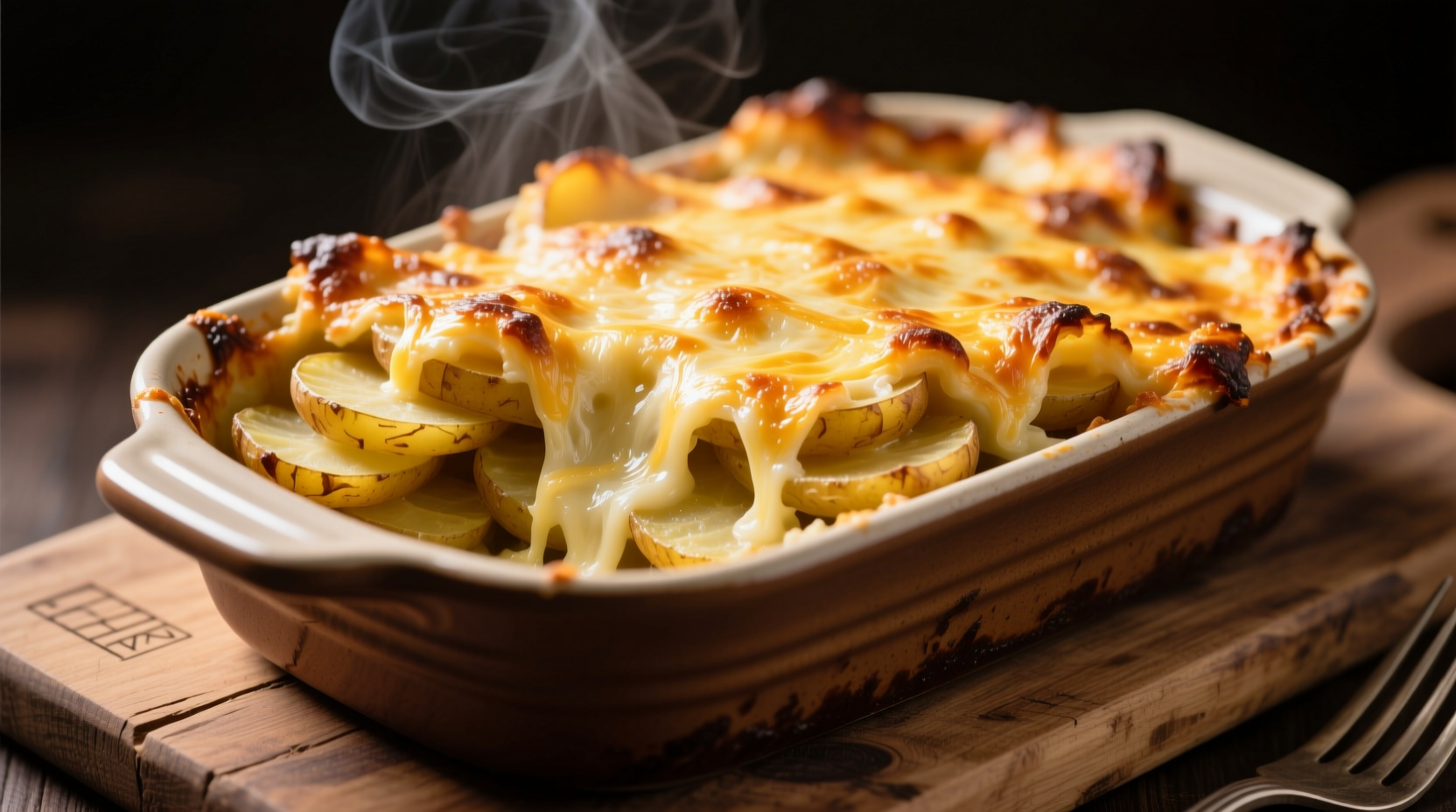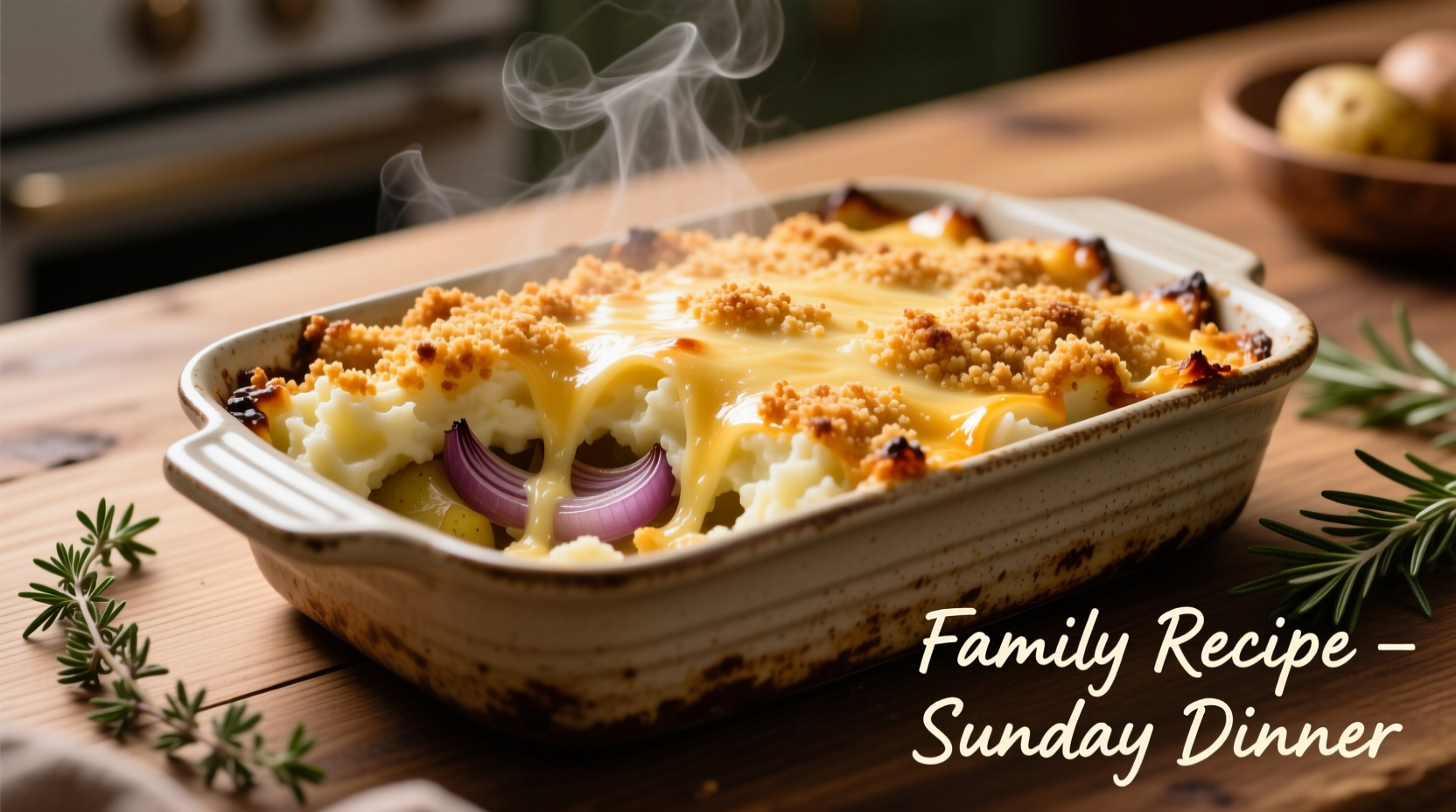Nothing says comfort food quite like a perfectly baked potato casserole with its golden crust and creamy interior. But achieving that ideal balance of crispy top and tender layers underneath requires understanding the science behind starch management and temperature control. As a culinary professional who's perfected this dish across countless holiday meals and family gatherings, I've discovered the precise techniques that transform this humble side dish into a showstopper.
The Science Behind Perfect Potato Texture
Many home cooks struggle with potato casseroles that turn out either soggy or dry. The secret lies in understanding potato starch behavior. When potatoes cook, their starch granules absorb water and swell. At 140°F (60°C), these granules begin to gelatinize, creating that desirable creamy texture. But go beyond 185°F (85°C), and you risk breaking down the structure completely, leading to mushiness.
| Potato Variety | Starch Content | Best For Casseroles? | Why |
|---|---|---|---|
| Russet | High (20-22%) | ✓ Ideal | Absorbs flavors well, creates fluffy texture when baked |
| Yukon Gold | Medium (16-18%) | ✓ Excellent | Natural buttery flavor, holds shape better than russets |
| Red Potatoes | Low (14-16%) | △ Limited use | Waxy texture can become gummy in casseroles |
| Sweet Potatoes | Medium (15-17%) | △ Specialized | Higher sugar content requires recipe adjustments |
Source: University of Minnesota Extension - Potato Storage and Preparation Guide
Building Flavor Layers: Beyond Basic Recipes
Most potato casserole recipes stop at "add cream of mushroom soup," but professional kitchens build flavor through multiple stages. Start by sautéing aromatics like onions and garlic in butter until they reach 160°F (71°C)—the temperature where maximum flavor compounds develop without burning. Then incorporate a roux (equal parts butter and flour cooked to 185°F/85°C) before adding your liquid components.
For the dairy element, temperature control is critical. Heating milk or cream above 180°F (82°C) causes protein denaturation that can lead to curdling when combined with acidic ingredients. Instead, warm dairy to 160°F (71°C) before incorporating into your mixture.

The Ultimate Potato Casserole Recipe
This tested recipe delivers consistent results by addressing the three critical phases of casserole preparation: potato preparation, sauce construction, and baking protocol.
Potato Preparation Protocol
- Slice thickness matters: Cut potatoes to 1/8-inch thickness using a mandoline (4-5mm) for even cooking
- Immediate acid bath: Soak slices in cold water with 1 tablespoon lemon juice per quart to prevent oxidation
- Par-cook properly: Blanch in 170°F (77°C) water for exactly 3 minutes to partially gelatinize starch without fully cooking
Sauce Construction Guide
The sauce must maintain proper viscosity throughout baking. This requires precise temperature control during preparation:
- Melt 4 tbsp butter at 150°F (66°C)
- Add 1/4 cup flour, cooking roux at 185°F (85°C) for 2 minutes
- Gradually incorporate 2 cups warmed milk (160°F/71°C)
- Add seasonings and bring to 180°F (82°C), never boiling
Troubleshooting Common Potato Casserole Problems
Even experienced cooks encounter issues with potato casseroles. Here's how to fix the most common problems with science-backed solutions:
Soggy Bottom Syndrome
Problem: Liquid pooling at the bottom of your casserole
Solution: After par-cooking potatoes, spread them on a clean kitchen towel and press gently to remove excess moisture. The USDA recommends maintaining moisture content below 80% for optimal casserole texture (USDA Food Safety Guidelines).
Dry or Crumbly Texture
Problem: Casserole falls apart when served
Solution: Ensure your sauce reaches 180°F (82°C) but doesn't exceed 185°F (85°C) during preparation. This temperature range optimizes starch gelatinization without breaking down the structure.
Make-Ahead Strategies That Actually Work
Many recipes claim to be "make-ahead friendly" but fail when reheated. Based on food safety research, here's what works:
| Preparation Stage | Safe Storage Time | Reheating Protocol |
|---|---|---|
| Prepped ingredients (separate) | 3 days refrigerated | Assemble and bake immediately |
| Assembled but unbaked | 24 hours refrigerated | Add 15 minutes to baking time |
| Partially baked (75% done) | 48 hours refrigerated | Finish baking at 350°F until 165°F internal |
| Completely baked | 3 days refrigerated or 2 months frozen | Reheat at 325°F until 165°F internal |
Source: USDA Food Safety and Inspection Service
Expert Variations for Every Occasion
Once you've mastered the fundamentals, these chef-developed variations address specific dining scenarios while maintaining structural integrity:
Holiday Entertaining: Gourmet Potato Gratin Casserole
Replace cream of mushroom soup with a bechamel sauce infused with fresh thyme and garlic. Layer potatoes with thin slices of Gruyère cheese between each layer. Bake at 325°F until the internal temperature reaches 165°F, then broil for 2-3 minutes for a golden crust. This version maintains its structure when served from a chafing dish for up to 90 minutes.
Weeknight Family Dinner: Quick Potato Casserole
For busy evenings, use pre-sliced potatoes (look for "fresh cut" not "pre-cooked") and a homemade sauce using Greek yogurt instead of roux. The yogurt's acidity helps maintain structure during faster cooking. Bake at 375°F for 35-40 minutes until the internal temperature hits 160°F.
Dietary Accommodations: Dairy-Free Potato Casserole
Many dairy substitutes fail in casseroles because they lack the proper fat structure. Instead of standard substitutes, use a cashew cream base heated to exactly 165°F (74°C) before combining with potatoes. This temperature activates the natural emulsifiers in cashews, creating a stable sauce that won't separate during baking.
Perfecting Your Potato Casserole: Final Tips
The final 10 minutes of baking determine your casserole's success. Set your oven to 350°F and check internal temperature at 45 minutes. The ideal finished temperature is 165°F (74°C)—any higher and you risk texture breakdown. Let the casserole rest for 15 minutes after baking; this allows the starch structure to set properly.
For that coveted golden crust, mix 1/4 cup panko breadcrumbs with 2 tablespoons melted butter and sprinkle over the top during the last 15 minutes of baking. The breadcrumbs will reach the perfect Maillard reaction temperature (310°F/154°C) without burning.
Frequently Asked Questions
Can I make potato casserole ahead of time and freeze it?
Yes, but with specific protocols. Completely baked casseroles freeze well for up to 2 months when wrapped tightly. For best results, cool completely, wrap in plastic followed by foil, and freeze flat. Reheat at 325°F until internal temperature reaches 165°F. Unbaked casseroles don't freeze well as the raw potatoes develop ice crystals that damage texture.
Why does my potato casserole turn out watery?
Watery casseroles typically result from improper potato preparation. Potatoes contain 79-82% water content. To prevent excess liquid, always par-cook potatoes in 170°F water for exactly 3 minutes, then thoroughly drain and press out moisture. Using high-starch potatoes like Russets that haven't been properly treated will release too much water during baking.
What's the best potato variety for casseroles?
Russet potatoes are ideal for traditional casseroles due to their high starch content (20-22%), which creates a fluffy texture that absorbs flavors well. Yukon Golds (16-18% starch) work well for creamier textures with natural buttery flavor. Avoid waxy potatoes like red potatoes for standard casseroles as their low starch content (14-16%) can lead to gummy textures.
How do I reheat potato casserole without drying it out?
Reheat at 325°F covered with foil for 20-25 minutes until internal temperature reaches 165°F. Add 1-2 tablespoons of milk or broth to the surface before reheating to replenish moisture. Never reheat at temperatures above 350°F as this rapidly dehydrates the dish. The USDA recommends maintaining internal temperature at 165°F for food safety when reheating leftovers.
Can I use sweet potatoes in a traditional potato casserole recipe?
Sweet potatoes require recipe adjustments due to their higher sugar content and different starch structure. Reduce added sweeteners by 25%, increase thickening agents by 20%, and lower baking temperature to 325°F. Sweet potatoes reach optimal texture at 185°F internal temperature rather than the 165°F for white potatoes. Mixing sweet and white potatoes works best with a 1:3 ratio.











 浙公网安备
33010002000092号
浙公网安备
33010002000092号 浙B2-20120091-4
浙B2-20120091-4